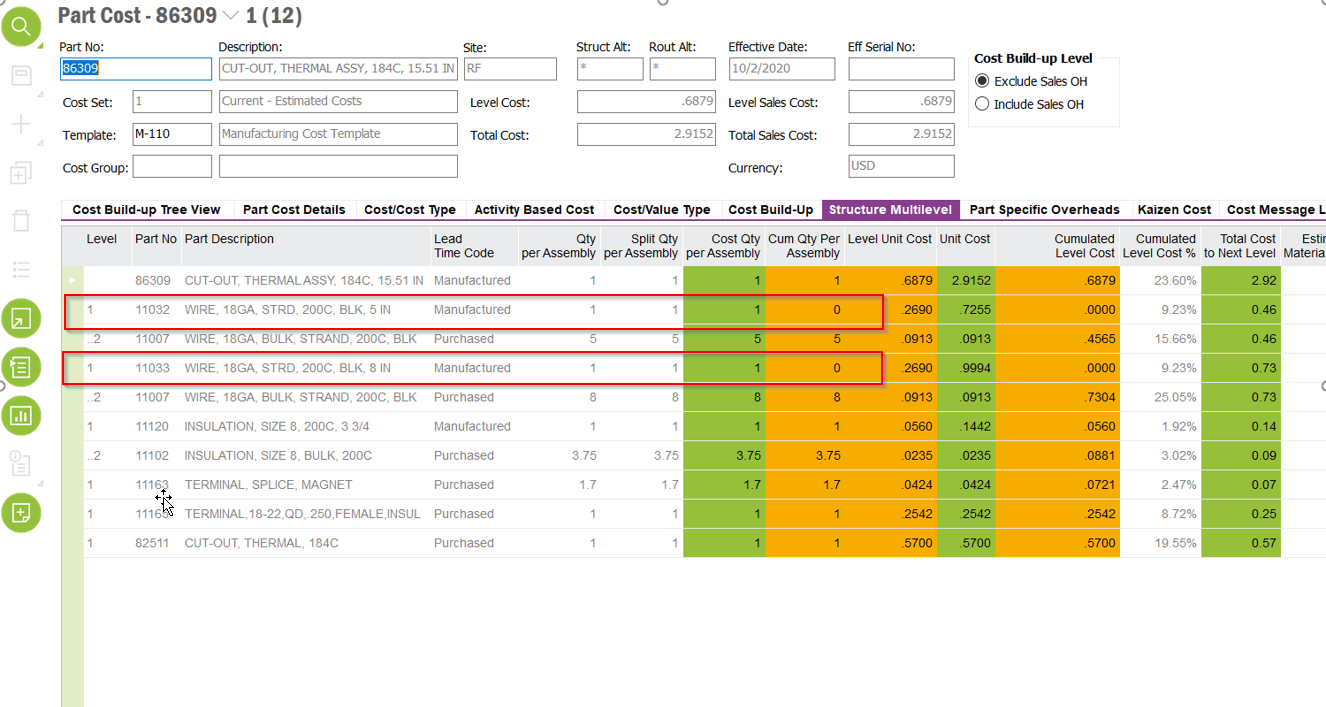We are working on moving to standard costing from weighted average and in our analysis, we do have a question on explaining why doesn’t Cum Qty per Assembly <> Qty per assembly? What condition causes this? Please see the example below:

Both part numbers 11032 & 11033 have 1 unit per assembly but the cumulative Qty per assembly = 0.
When adding on to the Total Cost to next level, it therefore does not take into account the cumulated level cost even though the unit cost has a cost.
Part# 11033 - unit cost = .9994 x cum qty per assembly = 0 = 0. So the Total cost to next level just carries over the cost level from part# 11007 =.73
So, I guess the question is if there is a qty per assembly value (1 in this case), why does it not carry over to the Cumulative Qty Per Assembly (0 is this case)?
Thanks!
Mark




